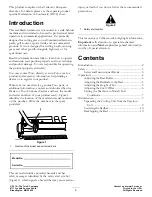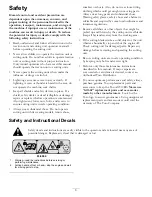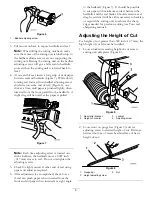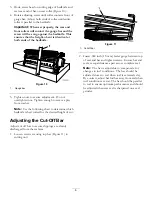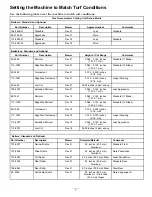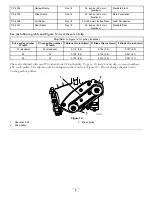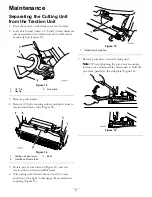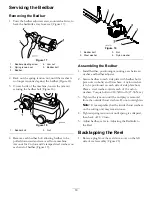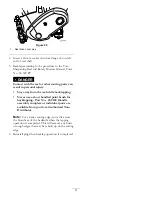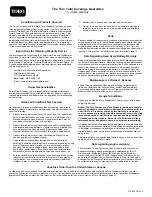
Figure 6
1.
Bedbar adjusting screw
3. Tilt mower on back to expose bedknife and reel.
Note:
When tilting the cutting unit back, make
sure the center of the cutting unit is blocked up so
the bedbar adjuster screws are not supporting the
cutting unit. Resting the cutting unit on the bedbar
adjusting screws will give a false reel-to-bedknife
contact when the cutting unit is lowered back to
level.
4. At one end of reel, insert a long strip of newspaper
between reel and bedknife (Figure 7). While slowly
rotating reel forward, turn bedbar adjusting screw
clockwise (on same end of reel) (Figure 6), one
click at a time, until paper is pinched lightly, when
inserted from the front, parallel to the bedknife. A
slight drag will be noted as the paper is pulled.
Figure 7
Note:
Each time adjusting screw is rotated one
click clockwise, the bedknife moves .0007 inch
(.017 mm) closer to reel. Do not overtighten the
adjusting screws.
5. Check for light contact at other end of reel using
paper and adjust as required.
6. After adjustment is accomplished, check to see
if reel can pinch paper when inserted from the
front and cut paper when inserted at a right angle
to the bedknife (Figure 7). It should be possible
to cut paper with minimum contact between the
bedknife and the reel blades. Should excessive reel
drag be evident it will be either necessary to backlap
or regrind the cutting unit to achieve the sharp
edges needed for precision cutting (see Toro reel
sharpening manual).
Adjusting the Height of Cut
For heights of cut greater than .500 inch (12.7 mm), the
high height of cut kit must be installed.
1. Loosen locknuts securing height-of-cut arms to
cutting unit side plates (Figure 8).
Figure 8
1.
Rear roller bracket
3.
Locknut
2.
Height-of-cut arm
4.
Adjusting screw
2. Loosen nut on gauge bar (Figure 9) and set
adjusting screw to desired height-of-cut. Distance
between bottom of screw head and face of bar is
height-of-cut.
Figure 9
1.
Gauge bar
3.
Nut
2.
Height adjusting screw
5


